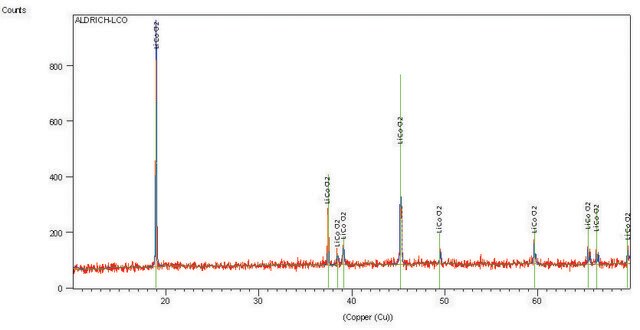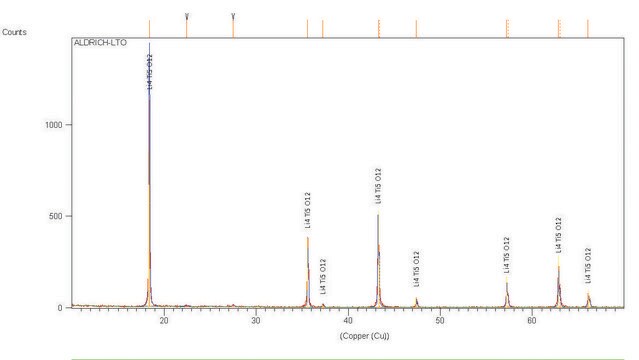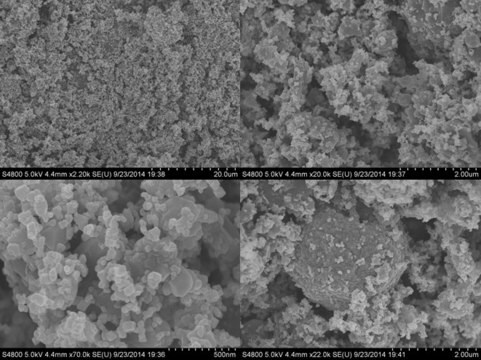725137
Lithium manganese dioxide
powder, <1 μm particle size, ≥98% trace metals basis
About This Item
Produits recommandés
Qualité
battery grade
Niveau de qualité
Pureté
≥98% trace metals basis
Forme
powder
Poids mol.
Mw 93.88 g/mol
Composition
LiMnO2
Caractéristiques du produit alternatif plus écologique
Design for Energy Efficiency
Learn more about the Principles of Green Chemistry.
sustainability
Greener Alternative Product
Taille des particules
<1 μm
Pf
400 °C
Densité
4.1 g/cm3 (lit.)
Application(s)
battery manufacturing
Autre catégorie plus écologique
Chaîne SMILES
[Li+].O=[Mn-]=O
InChI
1S/Li.Mn.2O/q+1;-1;;
Clé InChI
HSDMUHSXXGFNMK-UHFFFAOYSA-N
Description générale
Application
- Safety of a continuous glucose monitoring device during hyperbaric exposure.: This study examines the safety and performance of a continuous glucose monitoring device under hyperbaric conditions, highlighting the reliability and durability of Lithium manganese dioxide batteries in medical applications (Bliss et al., 2020).
- The 6 volt battery for implantable cardioverter/defibrillators.: This paper discusses the use of Lithium manganese dioxide batteries in implantable cardioverter/defibrillators, emphasizing their high energy density and long life, making them ideal for critical medical devices (Drews et al., 1998).
Caractéristiques et avantages
Li-Batteries, material for electrodes design and manufacturing
Produit(s) apparenté(s)
Code de la classe de stockage
11 - Combustible Solids
Classe de danger pour l'eau (WGK)
WGK 3
Point d'éclair (°F)
Not applicable
Point d'éclair (°C)
Not applicable
Faites votre choix parmi les versions les plus récentes :
Déjà en possession de ce produit ?
Retrouvez la documentation relative aux produits que vous avez récemment achetés dans la Bibliothèque de documents.
Les clients ont également consulté
Articles
Nanomaterials for Energy Storage in Lithium-ion Battery Applications
Increasing fuel costs and concerns about greenhouse gas emissions have spurred the growth in sales of hybrid electric vehicles (HEVs) that carry a battery pack to supplement the performance of the internal combustion engine (ICE).
Professor Qiao’s laboratory lays out recent advances in conversion type lithium metal fluoride batteries. This review explores key concepts in developing electrochemically stable microstructures for wide Li-ion insertion channels.
Lithium-ion batteries (LIBs) have been widely adopted as the most promising portable energy source in electronic devices because of their high working voltage, high energy density, and good cyclic performance.
Notre équipe de scientifiques dispose d'une expérience dans tous les secteurs de la recherche, notamment en sciences de la vie, science des matériaux, synthèse chimique, chromatographie, analyse et dans de nombreux autres domaines..
Contacter notre Service technique











